
21 Apr, 2024
Thailand, Laos, Australia mark 30th anniversary of the Mekong’s first post-war Peace Project
Bangkok – Thailand, Laos and Australia are this week holding a series of activities to mark the 30th anniversary of the 1st Thai-Lao Friendship Bridge, the first infrastructure project to reinforce the peace and promote travel, tourism, transportation and trade as a conduit for the economic development of the post-war Indochina region.
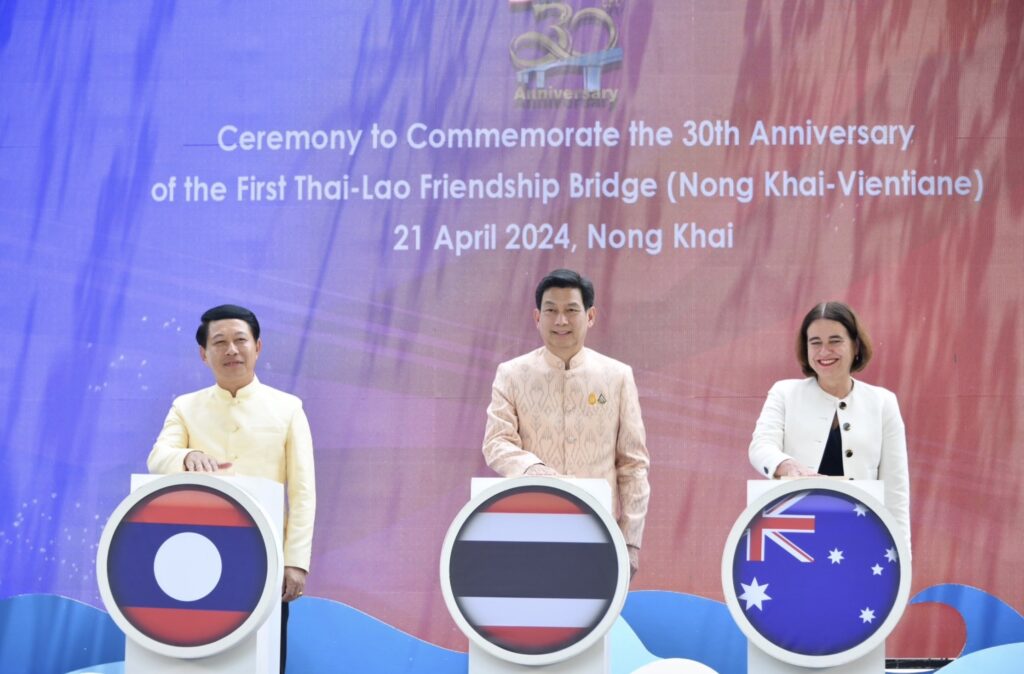
Thailand’s Deputy Prime Minister and Minister of Foreign Affairs Mr. Panpree Bahiddha-Nukara (centre) at the 21 April commemoration ceremony with his Laotian counterpart, Mr. Saleumxay Kommasith and Ms. Robyn Mudie, First Assistant Secretary, Southeast Asia Regional and Mainland Division, Department of Foreign Affairs and Trade of the Commonwealth of Australia. All images of the event in this dispatch are courtesy of Ministry of Foreign Affairs, Thailand
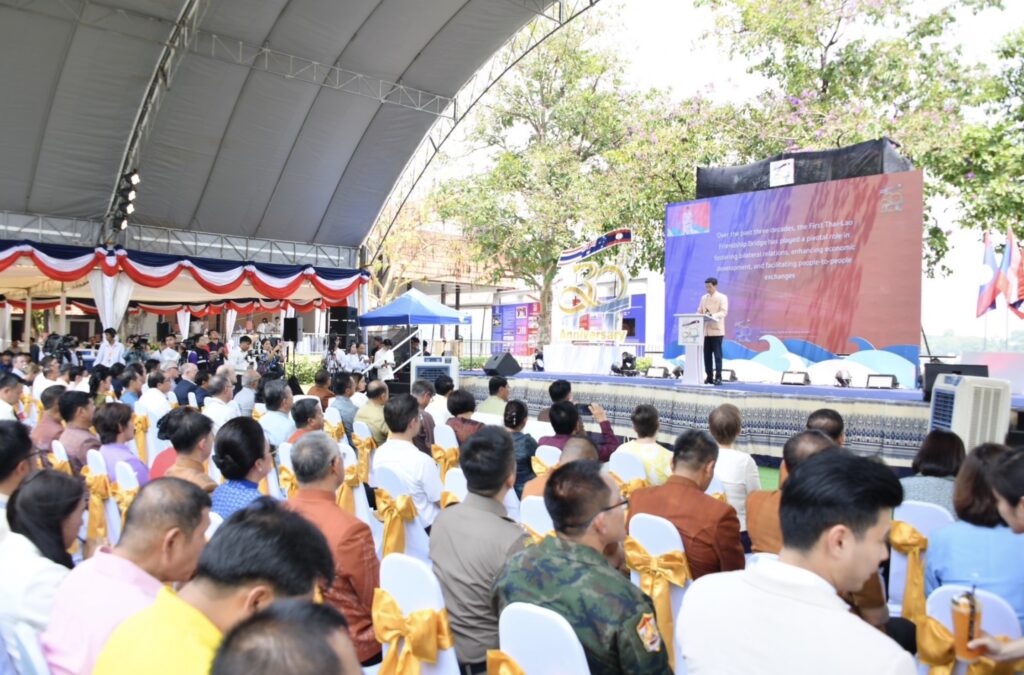
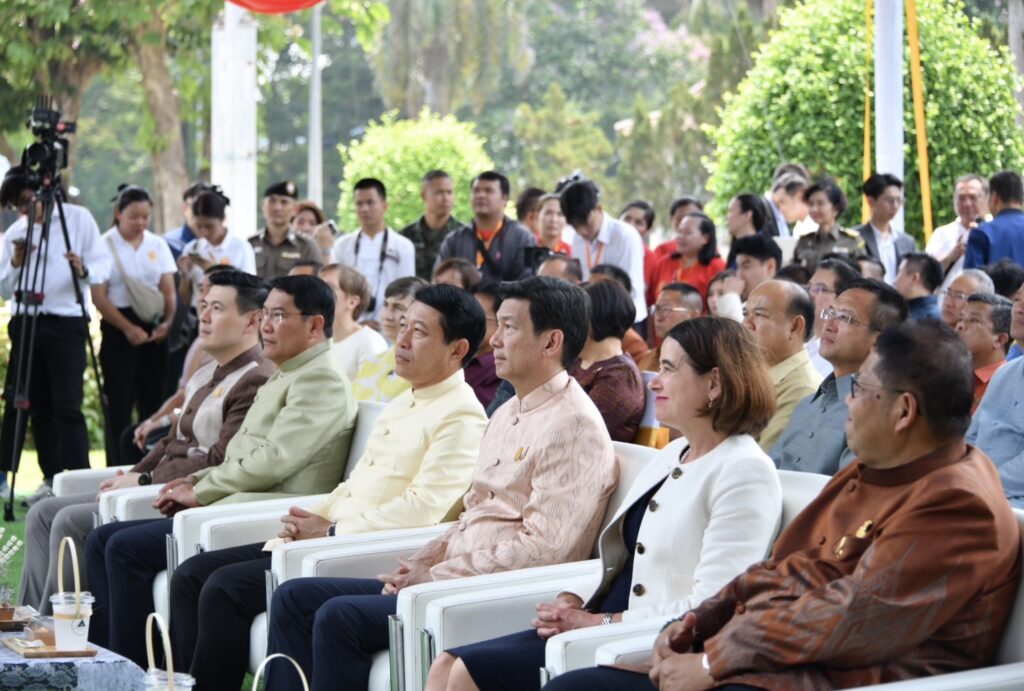
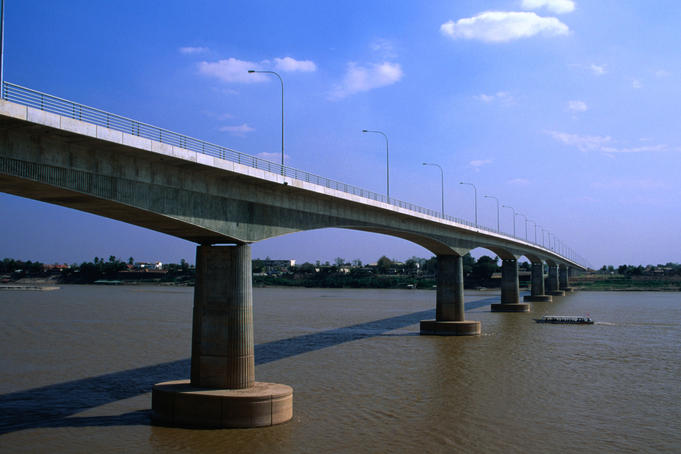
The 1,170-metre bridge was launched on 08 April 1994, completed ahead of schedule at a cost of $A42 million (750 million Baht, at the then exchange rates), including cost of construction, feasibly studies, design and fabrication. Funded entirely by the Australian government, it was inaugurated by His Majesty the late King Rama IX the Great, Laotian President Nouhak Poumsavanh and Australian Prime Minister Paul Keating.
Publications issued in 1994 to mark the event (which I have meticulously preserved in my archives below) included several statements on the long term hopes and aspirations of the project.
The then Australian Minister for Overseas Development, Dr Neal Blewett, said at the time that the bridge would have in impact beyond the important economic and social needs of Laos and Thailand. It would, he said, light the path to a new era in Indochina.
Janet Holmes a Court, then Executive Chairman of Heytesbury Holdings, the parent company of John Holland Constructions Pty Ltd, which constructed the bridge, told delegates at a Laos investment conference that she saw the bridge as far more than just a steel-and-concrete structure. “It is message to the people of Asia,” she said. “It says Australia is part of the future of Asia, and for those Australians who need convincing it is a message that Asia is where our economic prosperity lies.”
Noting that the ground-breaking ceremony in November 1991 had taken place just one month atter the signing of the Paris Peace Agreements, which ended all the Indochina conflicts, Ms Ellen Shipley, former Counsellor, Technical and Economic Co-operation, at the Australian Embassy, in Bangkok was quoted as saying, “Australia intended that the bridge would be a gift to the people of Thailand and Laos, a gift to the peace and development of the region, in the hope that it would be followed by other bridges, both concrete and inspirational.”
All those hopes have been realised.
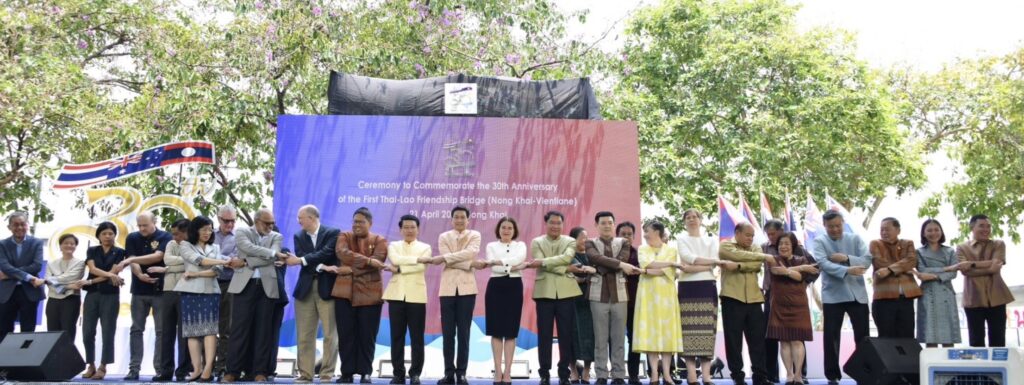
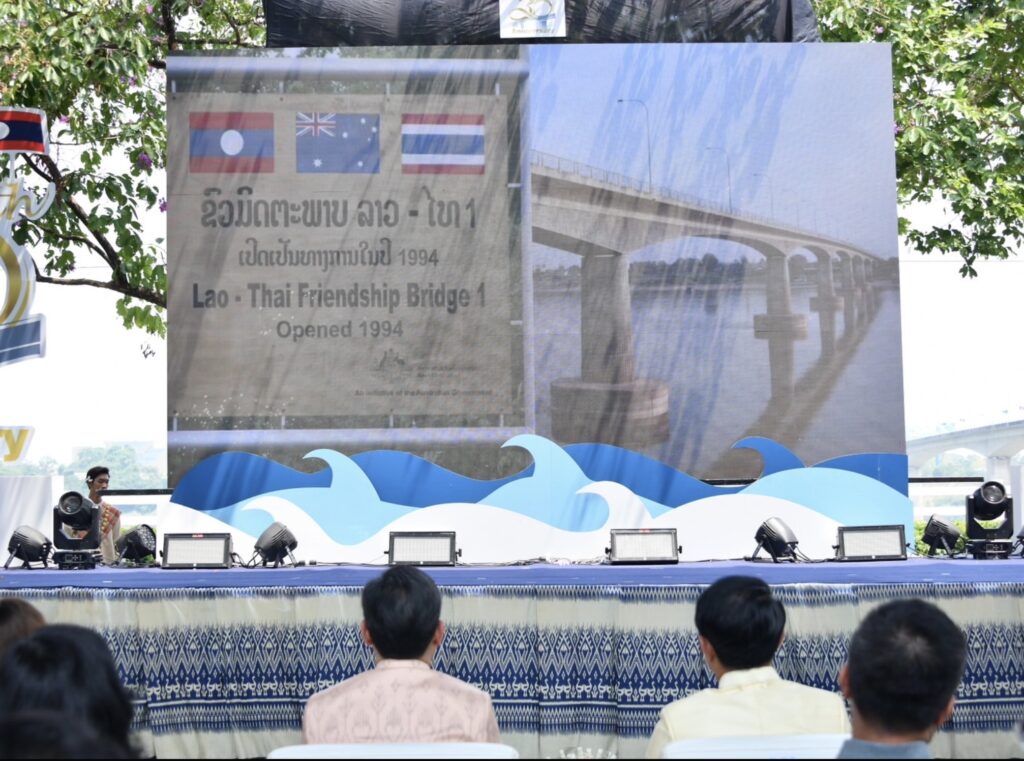
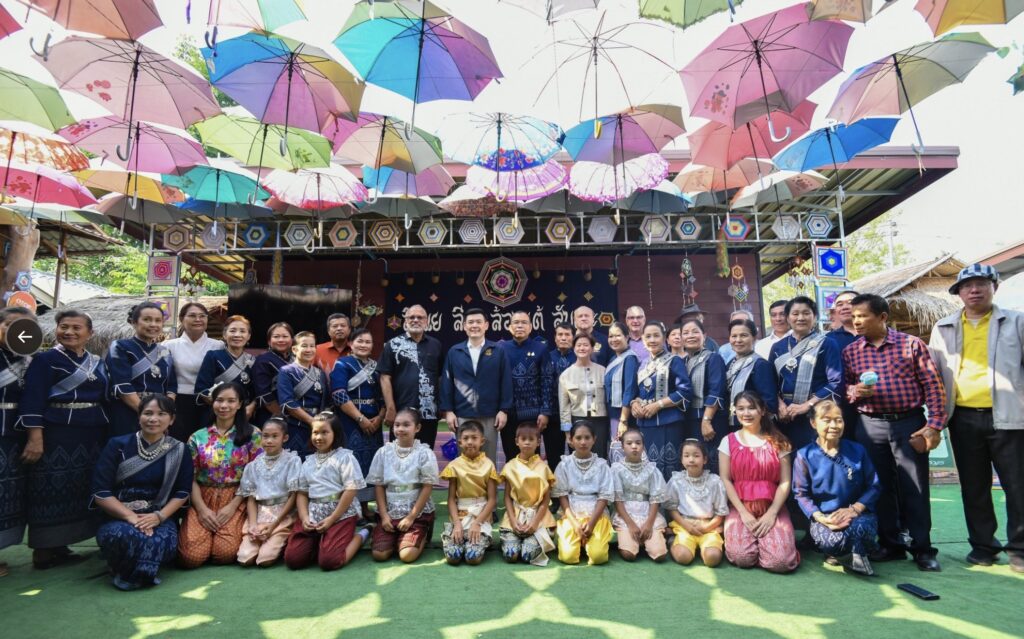
Today, it is the most important point of entry into Laos. Of the 4,791,065 total visitors to Laos in pre-Covid 2019, a total of 1,321,006 came via the bridge, well ahead of the 574,137 visitors via the Wattay International aiport in Vientiane. The Thai Foreign Ministry said the bridge is also the most important channel for cross-border trade between Thailand and Laos, accounting for over 33 per cent of the total border trade.
On 21 April 2024, the anniversary commemorations began with Thailand’s Deputy Prime Minister and Minister of Foreign Affairs Mr. Panpree Bahiddha-Nukara co-hosting lunch with his Laotian counterpart, Mr. Saleumxay Kommasith and Ms. Robyn Mudie, First Assistant Secretary, Southeast Asia Regional and Mainland Division, Department of Foreign Affairs and Trade of the Commonwealth of Australia.
Several ambassadors of ASEAN Member States, Timor-Leste, Dialogue Partners of ASEAN and Bangkok-based diplomats were invited to join the event which is being used to showcase the tourism and economic potentials of Nong Khai and its adjacent provinces, as well as to highlight the strategic importance of the bridge in the regional transportation and logistical connectivity.
Said the MFA statement, “The 1st Thai-Lao Friendship Bridge … is the only friendship bridge between Thailand and its neighbouring countries that features both road and rail systems. Thailand and Lao PDR are working on a project to construct a new railway bridge alongside the current Bridge in anticipation of future cross-border rail freight that may exceed the capacity of the current rail track on the 1st Friendship Bridge. The project is expected to begin in 2026 and be completed by 2029. Multi-modal transshipment centres will also be developed on both sides of the bridge, at Natha Rail Station on the Thai side, to handle both road and rail freights. The new railway bridge will also connect with the Thailand’s future high-speed rail from Bangkok to Nong Khai Province.
Here are some images from my unmatched historic archives, as well as images of the events on 21 April. Anyone reproducing these images is requested to give due credit, as follows: From the archives of Imtiaz Muqbil, Executive Editor, Travel Impact Newswire.

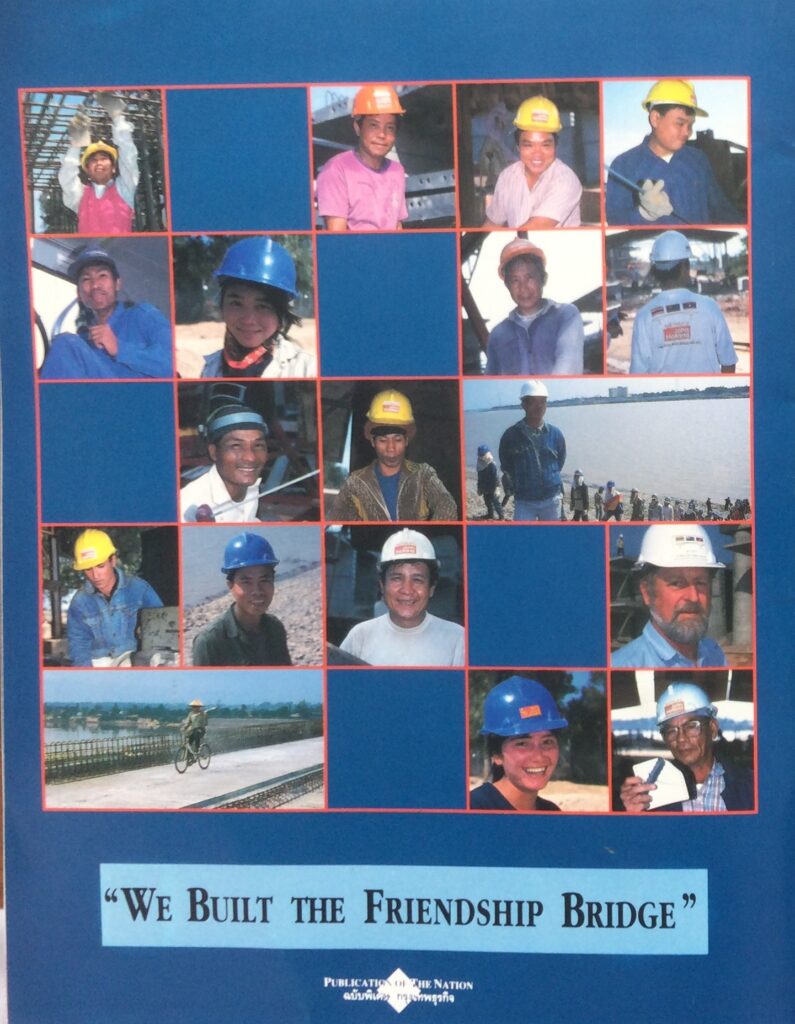
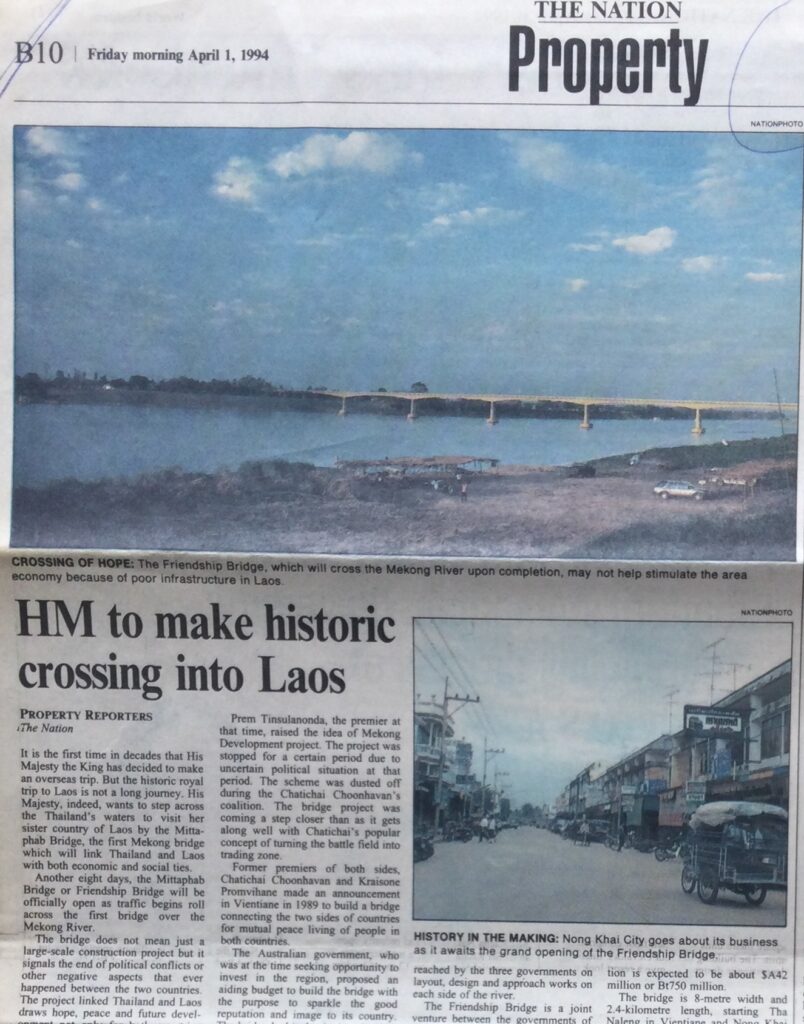




Liked this article? Share it!